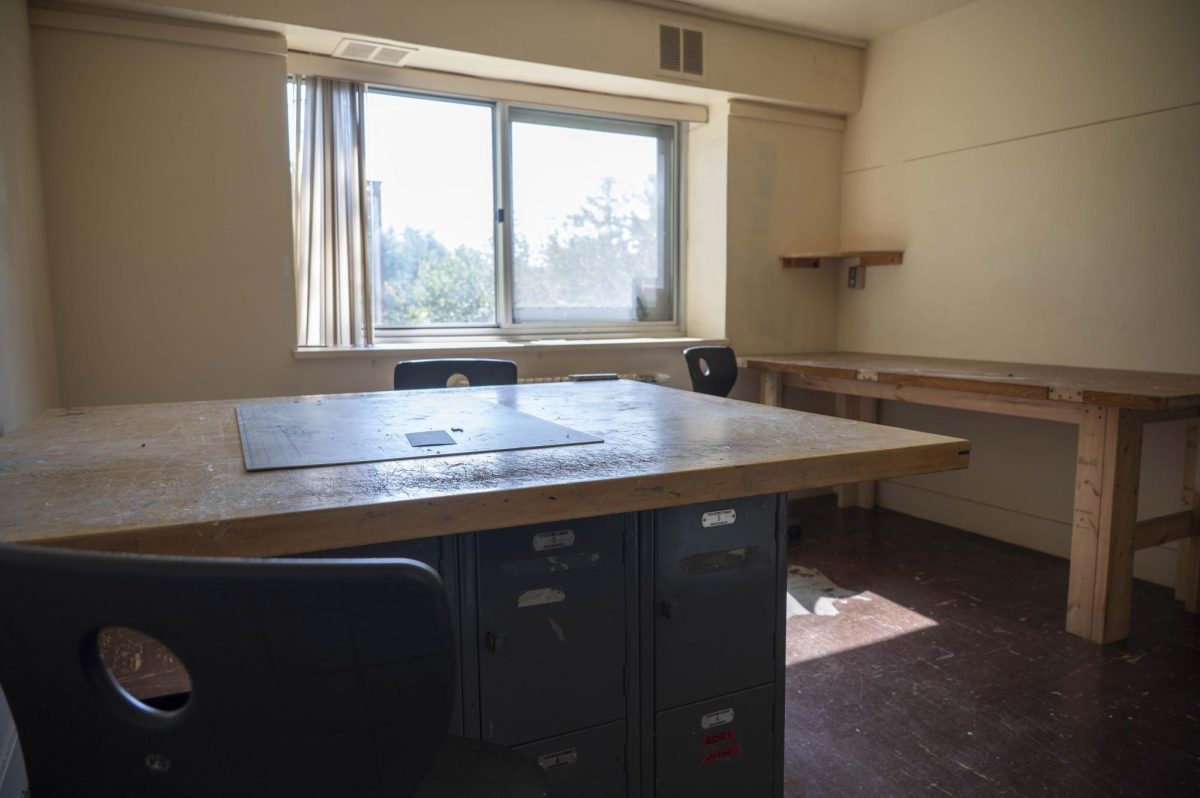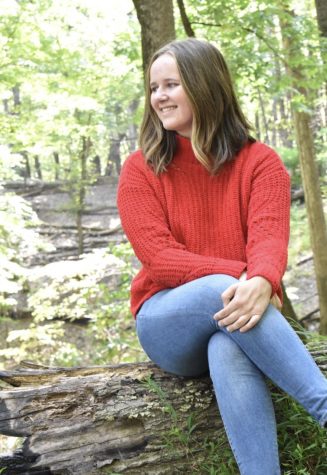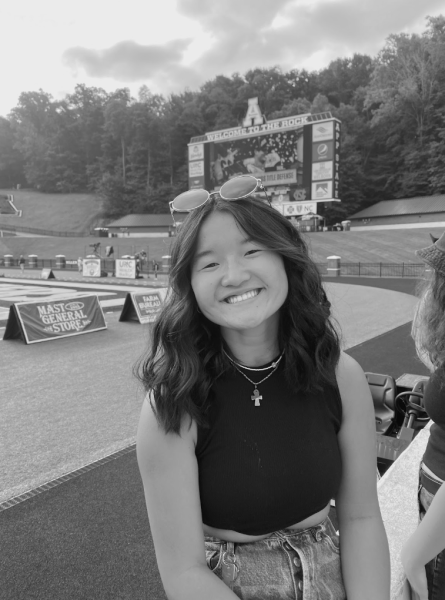Photography major Lauren Borer started off her senior year standing in a crowded dorm room in East Hall packed with 16 other students. Borer wasn’t visiting friends or meeting with an RA; she was straining to hear her professor’s voice in her alternative processes photography class.
“It’s getting absurd,” Borer said.
For students in the Department of Art, classes will be spread out across multiple buildings on campus. Senior Director of Public Relations Anna Oakes said in an email that these buildings include East Hall, Katherine Harper Hall, the Edwin Duncan Octagon, the Turchin Center for the Visual Arts, Appalachian Hall and L.S. Dougherty Hall.
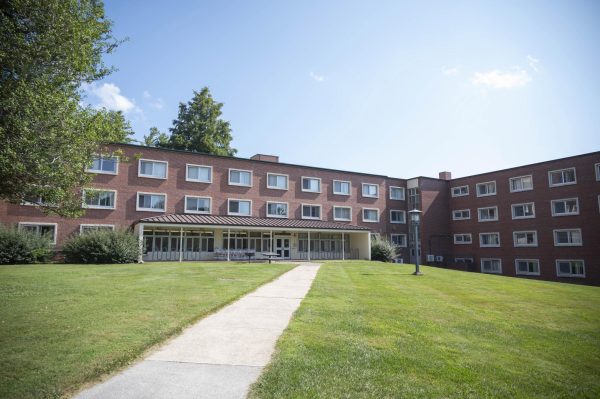
The Edwin Duncan Octagon, which is currently slated for demolition, and East Hall, which was previously set for demolition before being converted to office spaces and later working space and classrooms for art students, are also included in the list of locations for art classes. Some classes that count as general education requirements for the program are online.
Borer said the limited space, limited communication and “quiet changes” from administration have taken away resources art students need to create, such as a darkroom and photography-related printing space. She said faculty have helped with creating makeshift working spaces for art students, such as using a dorm room to create a darkroom.
Another one of her first impressions of her fall semester class locations was the loud and distracting construction noise she could hear from Katherine Harper Hall, which is cited as needing a “complete renewal” according to App State’s 2025 Master Plan.
One week prior to the beginning of the fall semester, Borer said class locations were changed to “to be announced” or to different locations than previously scheduled. Oakes said there are six buildings currently being used to house art classes, though Borer said she counted at least 13 buildings herself and other art students have art classes in.
All the while, Borer said the website updates were very “vague” and class changes were still in effect leading up to the start of the semester. She said the only previous mention of class locations came from a brief section of a podcast posted to the Department of Art update page during the spring semester.
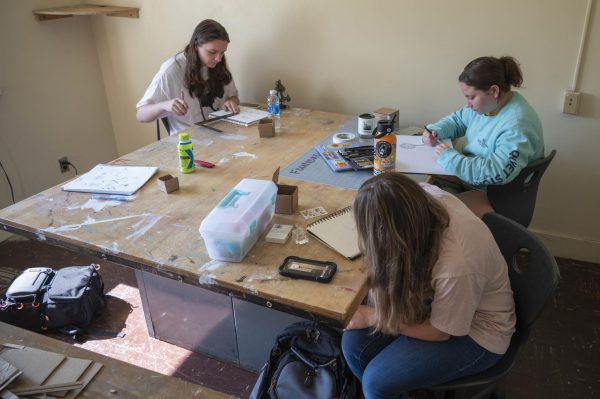
“I find it disgraceful that the administration is just putting us from one construction zone to another with no heads up,” she said.
Another discovery Borer said she and her fellow art students came across over the summer was inaccurate information about Wey Hall on the Bachelor of Fine Arts facilities page.
Borer said that throughout the summer, the page, which was last archived on July 27, advertised Wey Hall’s 24/7 open access to prospective students.
According to the site, all studio art classes were being held in Wey Hall. Borer said studio art classes have not been held in proper studio spaces, limiting creative access for students.
Borer said she and her fellow art students sent out an email on Aug. 12 detailing the outdated site information and within 12 hours, the information was updated to reflect the current status of Wey Hall.
“Wey Hall is currently undergoing renovations to provide a better and safer learning environment,” the page now reads.
Borer said the lack of communication about Wey Hall on the website negatively affects both current and prospective students.
“The issue with that; not only is that Wey Hall is closed, and they knew that it would be closed for over a year at that point, however, they’re also advertising the facilities that won’t be there when Wey Hall is finished, for example, the darkroom,” Borer said.
Callum Conklin, a senior art and geology double major, said the lack of updates and communication has been disappointing and has impacted their education.
Conklin, who is enrolled in an advanced ceramics course this semester, said the working conditions for the class are inadequate and pose a challenge to creating art.
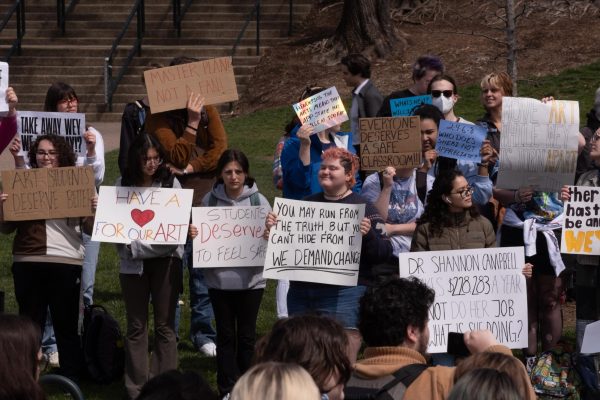
“We’re going to have to transport work to be able to fire it, which is incredibly difficult to do with ceramics because it’s very, very fragile before you fire it the first time,” Conklin said.
Borer said art students taking ceramics classes this fall were told by professors that the location for classes were not finalized, and because of that, the first week worth of ceramics classes would be canceled.
“It’s sad and it’s shocking to me that they’ve dropped the ball this far,” Conklin said.
Conklin said they considered taking one or two gap years before completing their senior year until App State had everything “figured out.”
Conklin said if there had been a stream of communication from administration over the summer, they would have felt better about the impacts related to Wey Hall’s renovations, even if they did not receive any answers. However, they said the communication has felt “one-sided,” as only students are communicating and voicing their concern.
“This is absolutely not what I’m paying for,” Conklin said.
Conklin said they feel they have missed out on important learning opportunities they would have been able to use in their future career as a result of the relocation.
Specific updates related to classes and facilities for the upcoming fall and spring semesters are shared directly with art students, faculty and staff on the department’s art news page, Oakes said. She said regular status updates regarding Wey Hall are posted on the Wey Hall renovation project website. One of these updates regarding class locations, she said, was included in the April 22 construction update podcast.
Oakes said that during the week leading up to the start of classes, two status update emails were shared with students by the department about class locations.

She said these classes were scheduled according to “standard university deadlines” and during the month of August, the department and College of Fine and Applied Arts began discussing a temporary relocation plan. The plan would be implemented if the required state inspections were not carried out prior to the beginning of the semester.
Borer and others are operating an independent club for art students and those impacted called the Art Student Advocacy Association, and encouraged students to reach out to join the club by emailing them at asaa.appstate@gmail.com.

